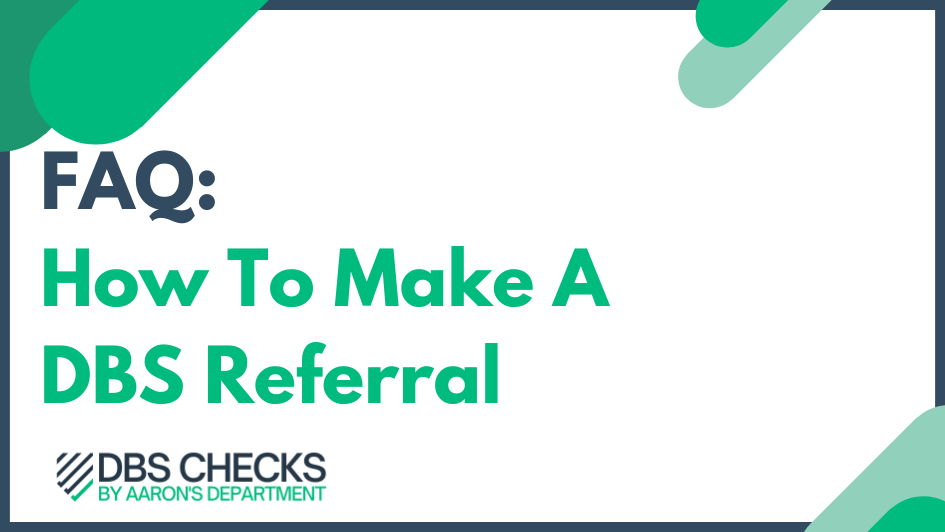Ensuring the safety of vulnerable individuals within our communities is of high importance, which is why it is important to know how to make a DBS referral.
If you find yourself in a situation where you believe someone should be added to the DBS barred list, you must make a referral. In this guide, we’ll walk you through the process of making a DBS referral.
1. Understanding The Criteria For Referral
Before initiating a DBS referral, it’s essential to be familiar with the criteria that warrant such action. Individuals can be referred to the barred list if they pose a risk of harm to vulnerable groups, including children and adults. This might involve criminal convictions, cautions, or other relevant information that suggests they may not be suitable for positions of trust.


2. Collecting Necessary Information
Gather all relevant information about the individual you wish to refer. This includes details of the specific incidents or concerns that lead you to believe they should be added to the barred list. The more detailed and comprehensive your information, the better equipped the DBS will be to assess the referral.
If you are a regulated activity provider or fall within the category of personnel supplier, you must make a referral when both of the following conditions have been met:
Condition 1
- You withdraw permission for a person to engage in regulated activity with children and/or vulnerable adults. Or you move the person to another area of work that isn’t regulated activity.
This includes situations when you would have taken the above action, but the person was re-deployed, resigned, retired, or left. For example, a teacher resigns when an allegation of harm to a student is first made.
Condition 2
You think the person has carried out 1 of the following:
- engaged in relevant conduct in relation to children and/or adults. An action or inaction has harmed a child or vulnerable adult or put them at risk or harm or;
- satisfied the harm test in relation to children and / or vulnerable adults. e.g. there has been no relevant conduct but a risk of harm to a child or vulnerable still exists. OR
- been cautioned or convicted of a relevant (automatic barring, either with or without the right to make representations) offence
3. Complete the DBS Referral Form
The DBS referral form can be found on the DBS official website.
This can only be done through the DBS, and not an Umbrella Body. Once completed, it can be emailed to the DBS, using the contact information provided on the above link.


How To Make A DBS Referral – Who Has A Legal Duty To Make A Referral To The DBS?
Companies who employ individuals or have volunteers who carry out regulated activity with children or adults have a legal duty to refer to the DBS if certain conditions are met. Agencies who provide individuals to organisations to carry out regulated activity also have a legal duty to refer to the DBS if needed.
Conclusion – How To Make A DBS Referral
It is important to know how to make a DBS referral to protect others, especially vulnerable groups. DBS referral forms can be made through the official DBS website. It is important to make sure referrals made contain all the relevant information, and are done as soon as possible.
Forward someone this article!
Related Content – How To Make A DBS Referral
If you have found our article, How To Make A DBS Referral useful, you might want to read about:
How Many People Are On The DBS Barred List?
List Of Offences That Will Be Filtered From A DBS Certificate
What the Changes to DBS Filtering Rules Mean For You
What If I Have Been Referred To The Barred List?
About The Author


Kellie Dawson
Kellie is our in-house legal expert when it comes to DBS checks. With a background in the legal sector, she has become a recognised authority in this area.
